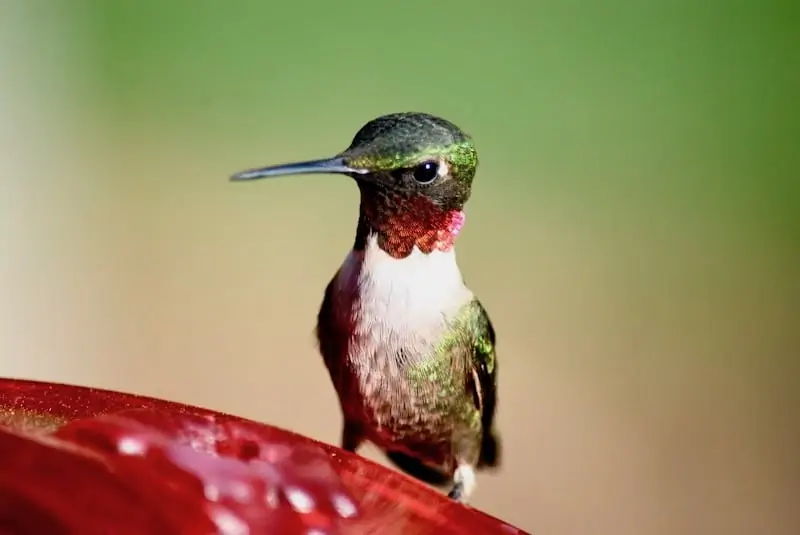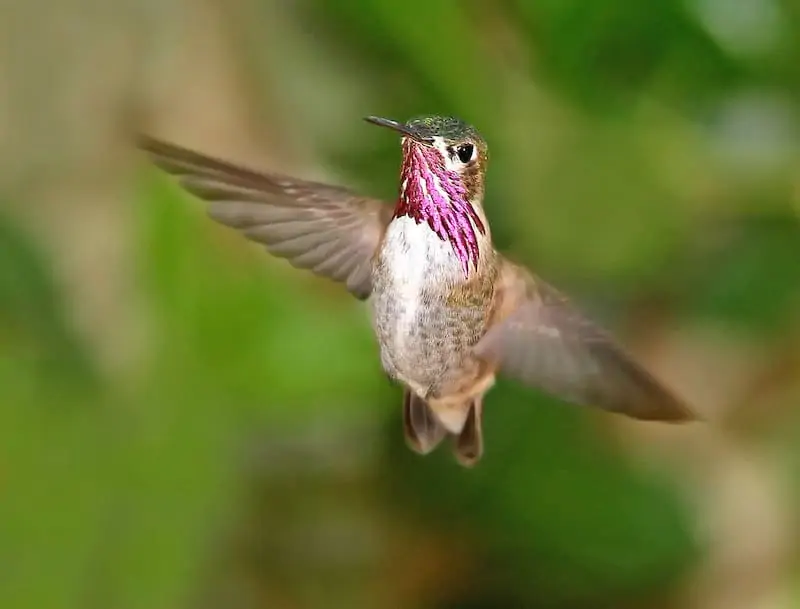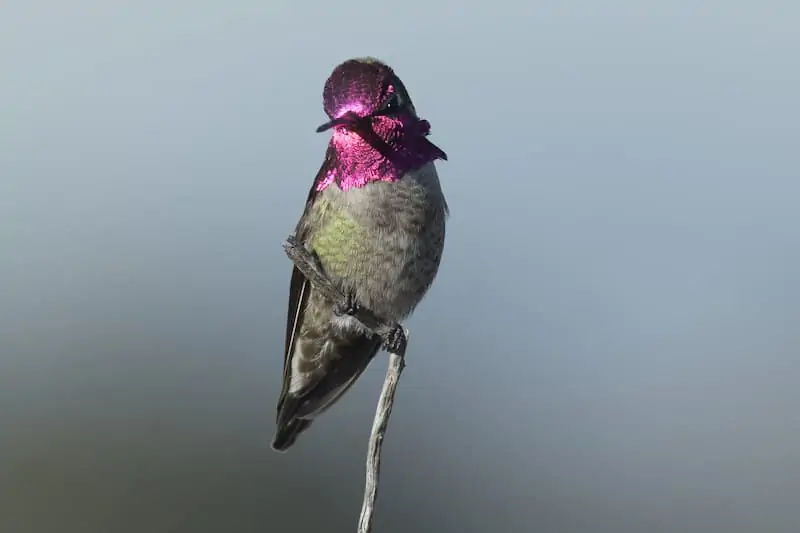Hummingbirds have been spotted in the United States in almost 30 different species. Some are common, while others are unusual or accidental visitors that appear once a year. We have identified two common or semi-common species of hummingbirds in Indiana and two uncommon species. In Indiana, you may see four different hummingbird species.
4 HUMMINGBIRDS IN INDIANA
We’ve compiled a list of hummingbirds that may be seen in Indiana based on range maps from authoritative sources such as allaboutbirds.org and ebird.org. The species name, as well as images of what it looks like, characteristics about appearance, and locations and times when you may see them are all listed for each species in this list. We’ll start with the two most common species and end with the two least common.
Visit this article to learn when hummingbirds will be returning to your state, and keep reading after the conclusion of the article for advice on attracting them to your yard.
Enjoy!
1. RUBY-THROATED HUMMINGBIRD

Scientific name: Archilochus colubris
In the eastern part of the United States, ruby-throated hummingbirds are the most prevalent kinds of hummingbirds. Hummingbirds in Indiana are by far the most prevalent. The back and underparts of both sexes are green. The throat of males is a deep red color that can appear black in certain lights.
They arrive in swarms from their Central American wintering grounds every spring. In one non-stop flight, many of them fly across the Gulf of Mexico! With nectar feeders and flowers, ruby-throated hummingbirds are very easy to attract to gardens.
Throughout the spring and summer, Ruby-throated Hummingbirds may be seen all across Indiana. In April and May, they will come, and in September, they will go.
2. RUFOUS HUMMINGBIRD

Scientific name: Selasphorus rufus
When it comes to sharing feeders and driving away other hummers, Rufous Hummingbirds are renowned for being extremely “feisty.” The upper breast of males is orange, and the throat is orange-red. Green females with rusty patches on the throat and a speckled neck.
They move up through California in the spring, spend the summer in the Pacific Northwest and Canada, before returning down through the Rockies in the autumn. While the rufous hummingbird is seen in the western United States, it is most likely the second most frequently sighted species in the east, trailing only the ruby-throated hummingbird.
The rufous hummingbird has been seen several times in Indiana, according to reports. Although they aren’t as prevalent as the ruby-throated, a few are spotted by expert hummingbird observers every year in the state. November and December are the months with the most recorded sightings in the state.
3. CALLIOPE HUMMINGBIRD

Scientific name: Selasphorus calliope
The Central American calliope hummingbird spends the winter in Central America and breeds mostly in the Pacific Northwest and western Canada during the breeding season. With the calliope being the smallest bird in the United States, that’s a impressively long migration!
The throats of males are striped in magenta, with downy streaks on the sides. Plain females have a peachy tint to their underparts and a few green markings on the throat.
The east coast is home to very few Calliope Hummingbirds, although they have been observed in Indiana near Indianapolis and Evansville at least twice. As a result, there is the potential for others to slip into the state from time to time.
4. ANNA’S HUMMINGBIRD

Scientific name: Calypte anna
In fact, Anna will be staying in the United States. Although they may be found across most of their range, they are only common in a few western states, including California and Washington. Even their chest and belly are strewn with emerald feathers, and their feathers are a bit brighter and more iridescent than most others. The male’s neck is pink, and the feathers on their head are bright.
Outside of their range, Anna’s are quite unusual, but they do stray and are found in most states in the central and eastern United States. At least once, 2021 has seen them in Indiana, when some lucky birdwatchers saw an Anna’s near the town of Highland on eBird. I kept them on the list because Anna’s have been seen in neighboring Wisconsin, Illinois, and Ohio, so there is always a chance for one to wander into the state.
ATTRACTING HUMMINGBIRDS TO YOUR YARD
1. HANG HUMMINGBIRD FEEDERS
Hang a nectar feeder in your yard, perhaps the best way to attract hummingbirds. Hummingbirds must consume frequently and nectar finding is critical for their survival. Pick a feeder with a red color and that is simple to disassemble and clean. Caring and replenishing should be done more often in hot weather than once a week. For most people, we recommend a saucer-shaped feeder. They are simple to maintain, perform well, and do not hold a large quantity of nectar.
2. MAKE YOUR OWN NECTAR
Make your own nectar to avoid unnecessary (and occasionally harmful) additives and red dyes. It’s a great value, super convenient, and fast. Add plain white sugar to water in a 1:4 proportion (1 cup sugar per 4 cups water) and you’ll have it all set. Making your own nectar without boiling the water is easy, as we’ve demonstrated in a how-to article.
3. PLANT NATIVE FLOWERS
Plant some flowers in your yard that will draw passing hummingbirds, in addition to a feeder. They are particularly drawn to red (as well as orange, pink, and purple) flowers, as well as trumpet or tubular-shaped blossom types. Try to arrange your plants in vertical rows to maximize space. Long cascading vines of flowers may be grown vertically on an obelisk trellis or a flat trellis attached to the side of your home. Hummingbirds love these 20 plants and flowers.
4. PROVIDE WATER
Hummingbirds need water for both drinking and bathing. They will use baths with the appropriate “specifications, despite the fact that they may find classic bird baths too deep. You may purchase a hummingbird bath or create your own, and here are some ideas for something unique in your yard.
5. PROMOTE INSECTS
Sugar isn’t enough for most hummingbirds, so they need protein in addition. Little insects make up a third of their diet. Mosquitoes, fruit flies, spiders, and gnats are among the insects. Avoid pesticides and help your hummers out. Our 5 simple tips will help you feed bugs to hummingbirds, as well as other advice on bug feeders.
